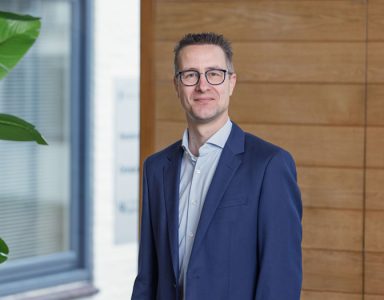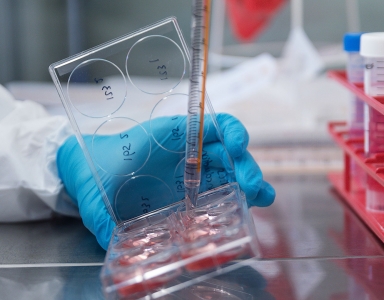Matthew effect: a necessary evil in modern science?
A world-wide phenomenon in science is that excellent researchers are significantly more successful in acquiring subsequent subsidies than starting investigators, leading to an accumulation of funds with a few established investigators. The resulting accumulated advantage is called the Matthew effect (in Dutch: Matteüs effect), a term first coined by sociologists. The term can be summarized by the axiom that ‘the rich get richer and the poor get poorer’ and is named after the parable of the talents in the biblical Gospel of Matthew (Matthew 25:29).
Matthew effect in science
In the Netherlands the effect is clearly noticeable in academic science. However, no scientific studies have been published on this Matthew effect phenomenon. A Dutch newspaper performed a study using public funding databases and interviews with researchers. They estimate that roughly 10% of Dutch researchers receive 61,3 % of all funding available for open competition funded research (Volkskrant, 2015). This finding suggests that a small group of approximately twenty researchers amass many millions of euros of funding, while the remaining thousands of academics struggle to scientifically survive. Considering the fact that success rates for some calls can be as low as 10%, the current funding climate can be tough.
In many European countries, including the Netherlands, fierce debates are held whether this skewed distribution of research funds is desirable or at least acceptable. Some people agree that proven excellence should be rewarded, while the opposite point of view claims that it hurts creativity, innovation and scientific progress. Some research councils in Europe, such as the Swiss National Science Foundation, have already announced measures to counter the effects of accumulated advantage by limiting the number of subsidies rewarded to one person at one given time to 1. The Netherlands Organisation for Scientific Research (NWO) has published their intent to investigate measures to reduce the Matthew effect (NWO, 2018).
Matthew effect in the Netherlands
In popular Dutch media, highly successful professors that receive one grant after the other adding up to sometimes tens of millions, have been called ‘Dagobert Duck professors’ (Volkskrant, 2015). However, it is important to point out that these substantial grants are in most cases awarded to large consortia of up to 20 or 30 researchers that have to divide the total grant amount. In the statistics the total grant amount will be linked to the main applicant, however they will only receive a portion of the grant. Despite only receiving a portion of the grant, the main applicant can claim the full grant amount and in this way acquire future funds. This example illustrates the Matthew effect. Since 2000, the economic windfall from Dutch natural gas fields incited the national government at the time to allocate large sums of money to Centres of Excellence for applied and translational research, such as the IOP Genomics programme (NGI). NGI budgeted between 2001 and 2013 a total of almost 1 billion euros to establish a number of new genomics research centres (Rathenau Institute, 2013). The main applicants of these large scale networking projects tend to be highly connected, established researchers that are well embedded in Dutch research politics and policy. This funding strategy obviously led to an exacerbation of the Matthew effect.
Multi-partner projects as nuclei for innovation
There are plenty of good reasons to adhere to the principle of cumulative advantage, especially if it concerns large research projects with many partners. The chance of a successful execution of a project by a large consortium of researchers is likely higher when managed by a senior investigator, who is well established and respected in his field and has significant bureaucratic experience. These researchers often already have the extensive resources and infrastructure that are required to get these large scale projects up and running. Besides, they are able to attract highly talented people to collaborate with them to execute the project. Importantly, the senior investigators can therefore foster and advance new and upcoming talent.
But there are some serious concerns with this research policy, some of which have long been acknowledged by sociologists. They argue that there are many examples in history that show that more credit for novel findings is given to well-known investigators than to junior researchers. This occurs even when the latter investigator has made the actual discovery. In the same manner, articles with comparable findings from established versus junior researchers often lead to a higher impact publication for the senior investigator (Hemlin, S., 2009). Therefore, the effect might be that young investigators are more likely to avoid high risk projects that are in fact often essential for innovation and should be an essential part of curiosity-driven research.
Budget diversification facilitates innovative research
A secondary fallout from the Matthew effect is that the budget for smaller open competition grants in the Netherlands is under severe stress. In these programmes, for example the NWO Open Competition programme, projects are being given top scores, but are not funded merely due to the limited budget. NWO has proposed a number of important measures to counteract this problem. After almost 20 years of funding large-scale initiatives and establishing centres of excellence, now is the time to start funding smaller scale individual-centred initiatives. This will enable excellent junior researchers to embark on higher risk (and potentially higher gain) projects. As often said, more government funds should be invested in research that enables these creative young people to participate in ground-breaking research. Ultimately, this strategy might be the most valuable long-term investment for European science.
Jasprien Noordermeer Ph. D.



